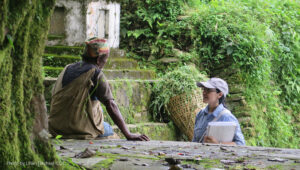Abstract/Description
Green roofs, which integrate vegetation into urban environments, help to counteract the negative effects of increasing sealed surfaces. So-called ‘semi-intensive’ green roofs, which incorporate varying substrate depths and structural heterogeneity, offer a promising balance between the benefits of extensive green roofs with a few centimetres of substrate (reducing static loads, as well as construction and maintenance costs) and the improved growth conditions of deeper substrates. However, the effect of this improved design on the microclimate, and its interaction with vegetation establishment remains underexplored.
We investigated a large semi-intensive green roof in Tyrol (Austria) to assess how variation in substrate depth (14 cm versus 7 cm) influences microclimate, vegetation composition, and plant stress responses. Our findings show that increased substrate depth significantly reduced maximum soil and surface temperatures (from 47.7 and 57.1°C with 7 cm substrate to 38.7 and 49.6°C with 14 cm substrate, respectively), as well as daily temperature variations. In addition, species composition differed within the roof, with higher cover of vascular species and non-succulent herbs in areas with deeper substrate and plant species not otherwise found on the roof in areas with deadwood piles on gravel. Plant physiological responses to summer heat waves ranged from reduced plant water potential (below 2.2 MPa in non-succulent herbs) to photosynthetic impairment (reduced electron transport rates and lower maximum fluorescence), the latter more pronounced in sedum species.
Our results demonstrate that even small variations in substrate depth and structural heterogeneity can create distinct microclimates on an otherwise homogeneous green roof. More favourable temperature and moisture conditions in deeper substrate areas promote plant growth, taxonomic diversity, and structural complexity of the vegetation. A better understanding of plant physiological responses to roof conditions can inform species selection, fostering (regional) species, plant diversity, resilient vegetation, and reducing reliance on uniform sedum-dominated plantings. This knowledge will contribute to the long-term sustainability and stress resistance of green roofs.


